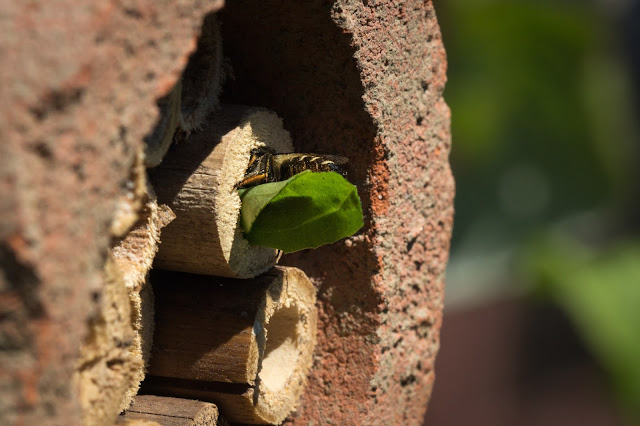The last time I saw a leafcutter bee's nest was 60-odd years ago in the handlebars of my brother's bike. I have seen leafcutters in the garden here and I have found signs of their handiwork on rose leaves and raspberry leaves before but until yesterday I had never found one building a nest. Time to get out the camera and take a few photos.
This is a female Megachile centuncularis, also known as the patchwork leafcutter bee. The cells in its nest are lined with pieces of leaf, carried to the nest one by one. I read on the BWARS website that the bee uses 6-14 pieces of leaf to line the walls of each cell and 6-7 discs to make a wall between each cell. I didn't find where the leaf pieces were coming from but it was close by because the forays to collect the leaves were as short as 20s.
Sometimes the piece of leaf is longer than the bee yet she seems to fly with it quite easily. I suppose it might be more difficult on a windy day.
It does seem to be a squeeze to get the leaf in sometimes but I think the way it is rolled makes it easier.
Like the red mason bee which featured here recently, and most other solitary bees, the cells are provisioned with pollen. Also like the red mason bee, the pollen is carried on a scopa on the underside of the abdomen. Here the scopa is full of orange pollen.
In the red mason bee nest all the pollen is yellow. This bee, however, also collects white pollen,
and a mixture of yellow and orange.
Here is a female Megachile centuncularis, possibly the same one, visiting viper's bugloss (Echium vulgare) a few metres away.
All I need now are photos and video of it cutting the leaves. I am working on it.
















No comments:
Post a Comment